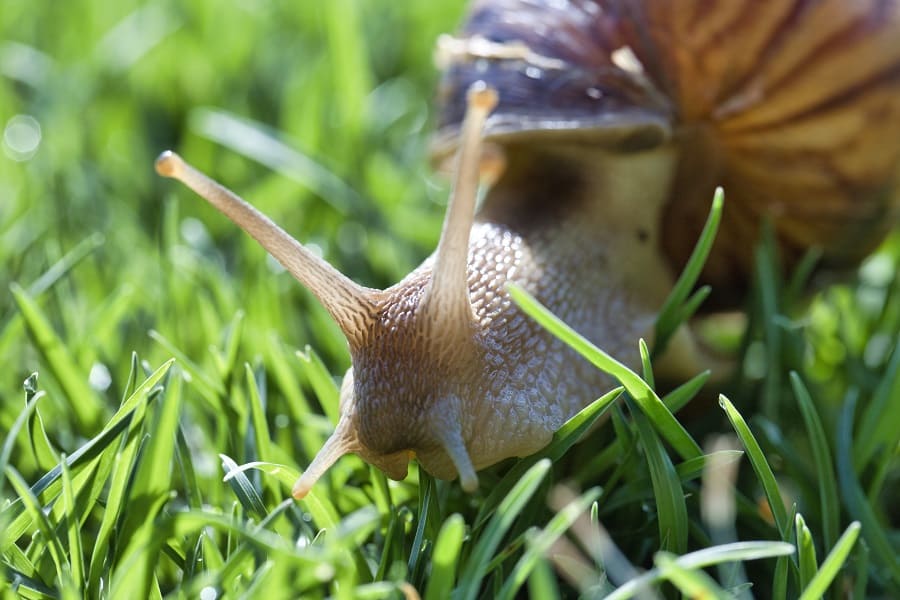How to deal with grubs on your lawn?
POSTED ON February 27, 2023 BY Galena Lawn Care
Do you find that your lawn has lately turned brown and patchy? If so, then you are probably dealing with grub infestation. Grubs are larvae of different types of beetle species, such as Japanese beetles, European chafers, and June beetles, to name a few. The grubs are known to have soft, pliable, white bodies with legs close to their heads. If they are disturbed, they immediately curl into a curved C shape. The grubs are typically dormant during the cool winter months but start to act as the weather begins to warm up.
As the months pave the way to spring and summer seasons, the grubs consume the roots of the grass and other types of organic matter and foliage to grow up. However, in this process, the grubs cause immense plant damage. The grubs grow to become adult beetles that lay eggs to produce more than perpetuate the infestation. Thus, it is significant that you get rid of them at the earliest possible instance.
Signs of grubs in your lawn
If you are doubtful about whether you have grubs on your lawn, look for the signs described below.
Yellowing grass
When the grubs start consuming the roots of the turfgrass, the grasses become yellow and spongy. So, if you start pulling at the grasses, they roll like a carpet.
The number of beetles or moths steadily increasing
If you find a lot of beetles or moths in and around the grasses, you can be sure that there are many grubs under the grasses.
Signs of drought
You water your grasses regularly, but even you find that your grasses look weary and drought-stricken. Such a problem can occur when you have grub damage. The problem with grub damage is that it may appear like a drought, but you won’t be able to fix it with additional watering.
The active presence of multiple other pests
Pests like raccoons and skunks enjoy eating the grubs, and they ruin your lawn while they search for them. Such a rampage can be rather difficult and expensive to fix and is as bad as the actual grub damage itself.
Patchy and brown grass
Your grasses will become brown and patchy before they start turning yellow. These signs are spotted randomly in different parts of the lawn.
White grubs
If you spot grubs in the soil of your lawn at a depth of about two to four inches, you have a grub infestation, even if there are no visible signs of damage in the lawn.
How to prevent and deal with lawn grubs?
Staying proactive about lawn maintenance is the best way to ensure that you do not have to deal with a grub problem in your lawn. You should keep your lawn healthy, as this can minimize the chances of having a problem with grubs. Beetles don’t prefer laying eggs in tall, thick grasses. Hence, you should keep your lawn perfectly well-fed and mowed high. Make sure that you never really overwater your grasses. Prevention is always better than a cure. This adage certainly holds when protecting your lawn against a grub problem. People wonder about “how you keep grubs away?” and the best answer for them is regularly caring for your lawn grasses.
What is a natural grub killer for lawns?
There are some natural ways you can remove grubs from your lawn. Let’s have a closer look at them. If you are wondering “how do you fix a grub-infested lawn?”, follow the steps mentioned here.
Getting natural predators to get rid of the grubs
One of the easiest and simplest ways of removing grubs naturally from your lawn is to get the natural predators of the grubs to feed on them. Grubs have numerous natural predators like chickens, chickadees, robins, and blue jays that can eat your grubs all day long, and unlike moles and raccoons, they do not damage your yard. You should try and make your lawn an attractive space for these birds to come and feed on the grubs.
Apply Azadirachtin or neem oil
Azadirachtin is a chemical ingredient that is present in neem oil. Whether you directly buy Azadirachtin or go for neem oil, you can use it to prevent the grubs from causing havoc on your lawn.
Using milky spore
The bacterial disease milky spore can target the larvae of Japanese beetles. The milky spore is a natural, eco-friendly, and non-toxic way to control your lawn’s grub population. Ideally, you should apply the milky spores to your lawn a couple of times, a year for around 2 to 3 years. It will prevent the appearance of grubs for the next 15 to 20 years.
Limiting the amount of moisture
The grubs must have a moisture-filled environment to thrive and survive. Hence you should stop watering your lawn and create a drought-like environment to remove the grubs quickly.
What is the fastest way to get rid of grubs?
The fastest way to get rid of grubs from your lawn is by using chemical pesticides. The pesticides that have bifenthrin, carbaryl, or imidacloprid are highly effective in removing grubs from a lawn. You can use both granular pesticides as well as liquid grub killers.
What is the best month to put down grub control?
The best month to put down grub control is during early spring and the late summer as your lawn starts showing signs of progressively increasing grub activity. If you work with grub prevention agents, you should from June-July, just before the grubs start hatching.